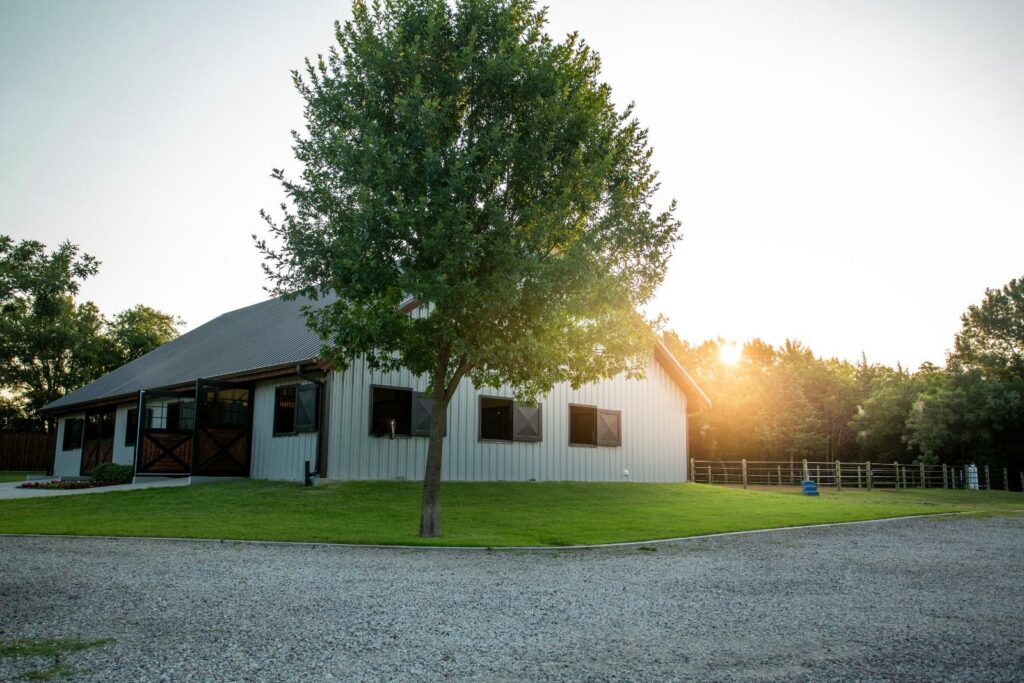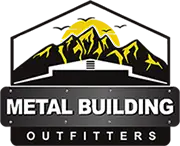
Contents
When considering construction options, you might question whether prefabricated steel structures truly offer the durability you seek. Rest assured, prefabricated steel structures not only meet but exceed expectations for longevity and resilience.
As you explore the intricacies of how steel structures maximize durability, you’ll uncover key insights into why they are increasingly favored in the construction industry.
Key Takeaways
- Rust prevention through protective coatings is essential for enhancing the longevity of prefabricated steel structures.
- Quality control measures and the use of high-quality steel alloys are crucial for ensuring the durability and resilience of steel buildings.
- Architectural freedom and design flexibility are advantages of steel structures that contribute to their long-term performance.
- Regular maintenance, inspections, and timely repairs are key strategies for maximizing the durability of prefabricated steel structures.
Benefits of Steel Structures
Maximizing durability, prefabricated steel structures offer unparalleled strength and longevity in construction projects. When considering the benefits of steel structures, two key aspects stand out: cost efficiency and design flexibility.
Cost efficiency is a primary advantage of prefabricated steel structures. The manufacturing process of steel components in a controlled factory environment reduces material waste and labor costs. Additionally, steel’s durability minimizes maintenance expenses over the structure’s lifespan, making it a cost-effective choice for long-term investments. By optimizing the use of resources, steel structures provide a financially attractive option for construction projects.
Design flexibility is another significant benefit offered by prefabricated steel structures. The inherent strength of steel allows for vast open spaces without the need for intermediate columns or walls, providing architects and designers with the freedom to create innovative and modern designs. Steel’s ability to be easily modified or expanded further enhances design flexibility, enabling adjustments to be made efficiently during both the construction phase and in the future. This adaptability ensures that steel structures can meet evolving needs and accommodate changes without compromising structural integrity.
Durability of Prefabricated Steel
Prefabricated steel structures, renowned for their cost efficiency and design flexibility, excel in durability, ensuring long-lasting strength for construction projects. When it comes to the durability of prefabricated steel, several key factors contribute to their resilience:
Rust Prevention: Prefabricated steel structures are often treated with protective coatings that prevent rust formation, enhancing their longevity and structural integrity.
Steel Reinforcement: The use of high-quality steel and strategic reinforcement techniques in prefabricated structures significantly enhances their ability to withstand various environmental stressors.
Quality Control Measures: Stringent quality control processes during the manufacturing of prefabricated steel components ensure that only materials meeting specified standards are used, thus improving overall durability.
Weather Resistance: Prefabricated steel structures are designed to withstand harsh weather conditions, making them ideal for long-term use in diverse climates.
Seamless Integration: The seamless integration of prefabricated steel components ensures minimal weak points in the structure, contributing to enhanced durability and stability over time.
Structural Integrity of Steel Buildings
Enhancing the structural integrity of steel buildings involves meticulous engineering to ensure optimal performance and safety standards are met. Material selection plays a pivotal role in determining the overall strength and durability of the structure. When it comes to steel buildings, the choice of materials, such as high-quality steel alloys, can significantly impact the building’s ability to withstand various environmental conditions and loads over time.
Construction techniques are equally essential in ensuring the structural integrity of steel buildings. Proper welding methods, precise assembly processes, and accurate alignment of components are critical factors that contribute to the overall stability and strength of the structure. Additionally, the use of advanced construction technologies, such as prefabrication and modular construction, can further enhance the structural integrity of steel buildings by minimizing errors during the assembly process and ensuring consistency in quality.
Steel Vs. Other Building Materials
Steel outperforms traditional building materials in durability and strength due to its inherent properties and engineering advancements. When comparing steel to wood and concrete for construction purposes, several key differences emerge:
Strength: Steel offers a higher strength-to-weight ratio compared to wood and concrete, allowing for lighter and more resilient structures.
- Durability: Steel is resistant to rot, mold, termites, and fire, unlike wood,
which is susceptible to these issues. Concrete, while durable, can crack over time.
Construction Speed: Steel structures can be prefabricated off-site, leading to quicker on-site assembly compared to the labor-intensive processes involved in wood and concrete construction.
Versatility: Steel allows for long spans and flexible designs, providing more architectural freedom than wood or concrete structures.
Environmental Impact: While steel is recyclable, it has a higher initial carbon footprint than wood. Concrete production is energy-intensive and contributes to CO2 emissions.
Considering these factors, steel emerges as a superior choice for constructing durable, long-lasting buildings. Its strength, durability, construction efficiency, design flexibility, and recyclability make it a top contender in the realm of building materials, offering a balance between performance and sustainability.
Resilience in Harsh Environments
When considering resilience in harsh environments, prefabricated steel structures offer exceptional protection against extreme weather conditions and maintain long-term structural strength.
Their ability to withstand harsh climates and weather events makes them a reliable choice for buildings in challenging environments.
The durability and robustness of steel structures make them a preferred option for ensuring stability and longevity in adverse conditions.
Extreme Weather Protection
Incorporating advanced protective coatings and reinforced structural elements ensures the resilience of prefabricated steel structures in extreme weather conditions. When it comes to extreme weather protection, here are key strategies to enhance the durability of prefabricated steel structures:
Corrosion-Resistant Coatings: Shielding steel components from moisture and corrosive elements.
Impact-Resistant Design: Withstanding high winds, hail, or flying debris.
Seam Sealing: Preventing water ingress at joints to maintain structural integrity.
Insulation Solutions: Regulating internal temperatures for climate adaptability.
Elevated Foundations: Protecting against flooding and soil erosion.
Implementing these measures fortifies the structure’s ability to withstand harsh environmental conditions, ensuring longevity and safety for years.
Long-Term Structural Strength
Fortifying prefabricated steel structures against extreme weather conditions through advanced protective coatings and structural reinforcements lays the foundation for ensuring long-term structural strength and resilience in harsh environments. When considering durability strategies, incorporating longevity maintenance practices is crucial for enhancing the lifespan of steel structures in challenging settings. Implementing regular inspections, corrosion protection measures, and structural integrity assessments are essential components of a comprehensive maintenance plan. By proactively addressing potential weak points and applying appropriate protective treatments, you can significantly prolong the structural strength of prefabricated steel buildings in harsh environments. This proactive approach not only enhances the longevity of the structures but also ensures their resilience in the face of adverse weather conditions.
| Durability Strategies | Longevity Maintenance |
|---|---|
| Advanced Protective Coatings | Regular Inspections |
| Structural Reinforcements | Corrosion Protection Measures |
| Proactive Weak Point Identification | Structural Integrity Assessments |
Longevity of Steel Structures
To ensure the longevity of steel structures, meticulous attention must be paid to maintenance and corrosion prevention measures. Steel, while incredibly durable, can be susceptible to corrosion over time if not properly cared for. Implementing rust prevention techniques and sustainable practices is crucial in enhancing the lifespan of steel structures.
Key Factors for the Longevity of Steel Structures:
- Regular Inspections: Conduct routine checks to identify any signs of corrosion or damage early on.
- Proper Coating Application: Ensure that the steel is adequately coated with corrosion-resistant materials to protect it from environmental factors.
- Effective Drainage Systems: Implement efficient drainage solutions to prevent water accumulation, which can accelerate corrosion.
- Environmentally-Friendly Practices: Embrace sustainability by using eco-friendly coatings and materials that are both durable and environmentally conscious.
- Timely Repairs: Address any issues promptly to prevent small problems from escalating and causing significant damage to the structure.
Impact Resistance of Steel Buildings
When assessing the impact resistance of steel buildings, meticulous testing and analysis are crucial to determine their ability to withstand external forces effectively. Impact resistance testing plays a vital role in evaluating how steel structures react to sudden impacts, such as those from severe weather conditions or accidental collisions. Through rigorous testing procedures, engineers can assess the structural design of steel buildings to ensure they meet the required safety standards.
Material selection also plays a significant role in enhancing the impact resistance of steel buildings. Choosing high-quality steel with the appropriate strength and durability properties can significantly improve the building’s ability to withstand impact forces. Additionally, the use of advanced construction techniques, such as proper welding practices and reinforced connections, can further enhance the overall impact resistance of steel structures.
Structural design is another key factor in maximizing the impact resistance of steel buildings. By incorporating features like energy-absorbing elements and strategic load-bearing components, engineers can design steel structures that are better equipped to handle sudden impacts without compromising their integrity. Overall, a comprehensive approach that considers impact resistance testing, material selection, and structural design is essential in ensuring the durability and safety of prefabricated steel buildings.
Maintenance Considerations
To ensure the longevity of prefabricated steel structures, you must prioritize corrosion prevention methods, conduct regular inspections, and promptly address any necessary repairs.
Applying protective coatings is crucial in safeguarding the steel against environmental elements that can lead to deterioration.
Corrosion Prevention Methods
Regular inspection and timely application of protective coatings are essential maintenance practices to prevent corrosion in prefabricated steel structures. When it comes to corrosion prevention techniques, surface coatings play a vital role in extending the lifespan of steel structures. Consider rust resistance and galvanization methods to enhance the durability of your prefabricated steel building.
Here are some key points to keep in mind:
- Regular Inspections: Schedule routine checks to identify any signs of corrosion early on.
- High-Quality Coatings: Invest in top-notch protective coatings to shield the steel surface.
- Galvanization: Opt for galvanized steel components for increased rust resistance.
- Timely Repairs: Address any coating damages promptly to prevent corrosion spread.
- Environmental Considerations: Factor in the surrounding environment when choosing corrosion prevention methods.
Regular Inspections and Repairs
Ensure that inspections and repairs are conducted diligently to maintain the structural integrity of prefabricated steel buildings. Establish a consistent maintenance schedule to uphold the longevity of your structure.
Regular inspections, ideally semi-annually or annually, are crucial to identify any issues promptly. Quick detection can prevent minor problems from escalating, minimizing repair costs in the long run. By adhering to a structured maintenance plan, you can enhance the durability and reliability of your prefabricated steel building.
Structural integrity is paramount, and routine inspections play a pivotal role in ensuring this. Addressing any maintenance needs promptly won’t only extend the lifespan of your structure but also contribute to a safer working environment. Remember, proactive care is key to maximizing the benefits of your steel building.
Protective Coatings Application
Implementing proper protective coatings on prefabricated steel structures is essential for maintaining their longevity and durability. When considering protective coatings application, it’s crucial to focus on the following key points:
- Surface Preparation: Ensure thorough cleaning and removal of any contaminants before applying the protective finish.
- Application Techniques: Utilize spray, brush, or roller methods for an even and consistent coating.
- Type of Coating: Select the appropriate protective finish based on environmental factors and desired durability.
- Multiple Layers: Apply multiple layers of protective coatings to enhance effectiveness and longevity.
- Regular Maintenance: Schedule periodic inspections and touch-ups to address any signs of wear or damage promptly.
Wrap-Up
Prefabricated steel structures offer unparalleled durability, structural integrity, and longevity compared to other building materials.
The impact resistance and resilience of steel make it ideal for harsh environments, ensuring minimal maintenance and maximum longevity.
By maximizing durability with prefabricated steel, you can trust that your building will stand the test of time, withstanding various environmental factors and providing a reliable and secure structure for years to come.
Recent Posts
Efficient Construction of Large Metal Warehouses
When it comes to the optimization of building substantial metal storage facilities, one must consider
Why Choose Energy-Efficient Metal Warehouse Construction?
When it comes to selecting the construction method for your warehouse, choosing energy-saving metal construction
What Is the Key to Efficient Metal Warehouse Construction?
When it comes to efficient metal warehouse construction, understanding the key elements that drive success


